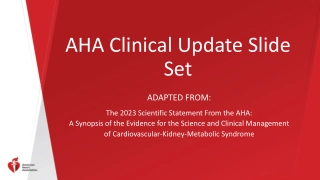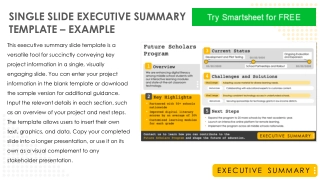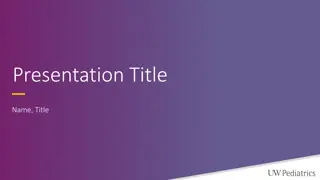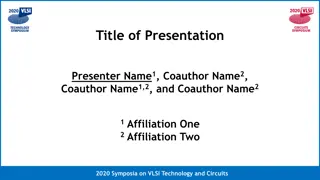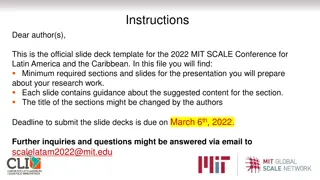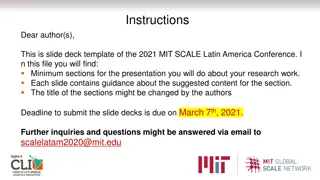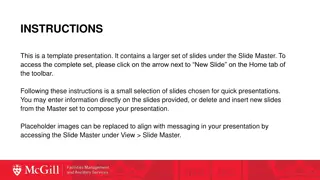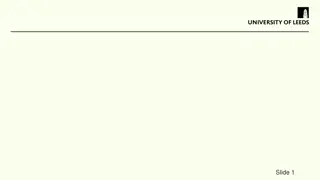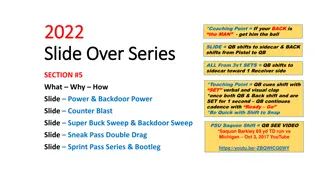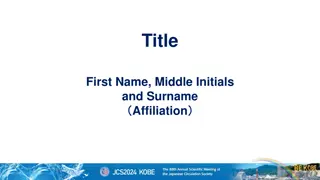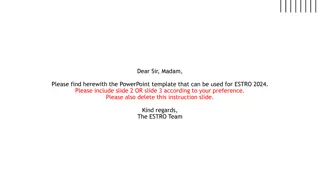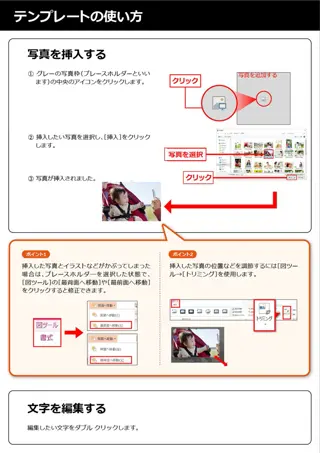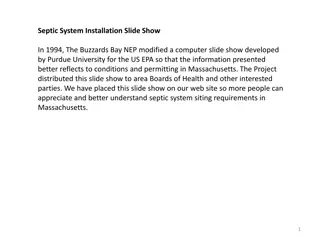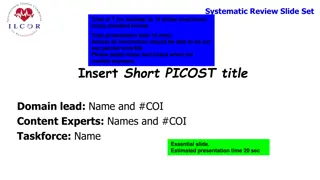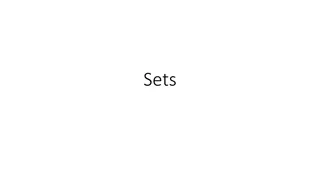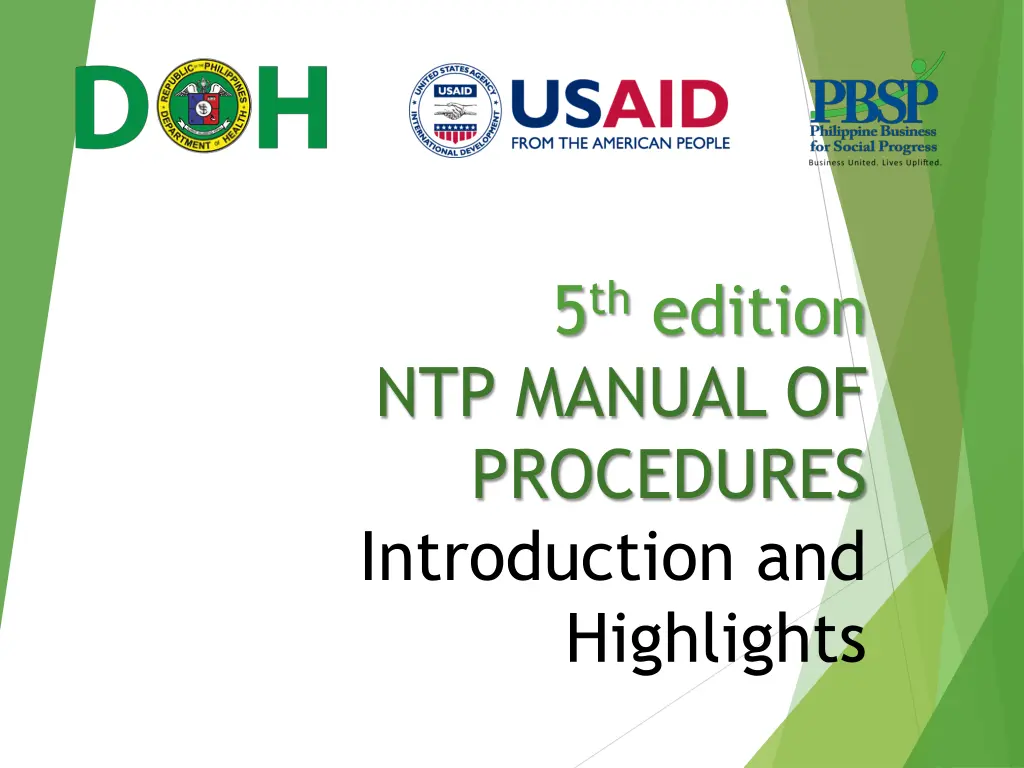
Evolution and Usage of the NTP Manual of Procedures
Discover the evolution of the NTP Manual of Procedures from its inception to the latest 5th edition, highlighting its purpose, updates, and the roles of various stakeholders. Learn how this manual provides essential guidelines for TB diagnosis, treatment, and program management, aiming towards a TB-free Philippines.
Uploaded on | 0 Views
Download Presentation

Please find below an Image/Link to download the presentation.
The content on the website is provided AS IS for your information and personal use only. It may not be sold, licensed, or shared on other websites without obtaining consent from the author. If you encounter any issues during the download, it is possible that the publisher has removed the file from their server.
You are allowed to download the files provided on this website for personal or commercial use, subject to the condition that they are used lawfully. All files are the property of their respective owners.
The content on the website is provided AS IS for your information and personal use only. It may not be sold, licensed, or shared on other websites without obtaining consent from the author.
E N D
Presentation Transcript
5thedition NTP MANUAL OF PROCEDURES Introduction and Highlights
Rationale for Updating the MOP Policy issuances of WHO and ISTC Expanded participation of non-NTP facilities like public-private mix DOTS, hospitals, private clinics, prisons New initiatives such as intensified case finding, infection control Roll-out of rapid diagnostic tools Development of the 2010 2016 Philippine Plan of Action to Control TB (PhilPACT)
Processes of MOP Revision Participatory process Launched at PhilCAT convention Stakeholders consulted Core group drafted other chapters August 2013 TWG revised CF and CH TRP reviewed DOH order issued: TRP and TWG October 2010
Evolution of the MOP 1969 1980 1st edition 1988 2nd Edition 1997 Technical Guidelines
Evolution of the MOP 3rd Edition 2001 2005 4th Edition 2005 5th Edition 2013
Uses of MOP Provides technical policies and guidelines on how to diagnose, treat and counsel TB cases Provides guidelines on how to strengthen NTP support health systems such as logistics management, and recording and reporting Defines the roles and tasks of offices/persons involved in TB control Serves as reference for monitoring, supervision and evaluation
Users of MOP Primary users Secondary users Program managers provincial / city TB coordinators and regional TB coordinators, IDO-DOH TB care providers staff of DOTS facilities such as health centers, rural health units, PPMDs, hospitals, government health facilities, private clinics Policy makers, advocates, researchers Partners including donors
Preface: DOH Secretarys Call I call on all health organizations and facilities to ensure that all their health care providers possess the capability to provide quality TB care through training and supervision. Only through well-trained cadres would our fight against TB bring us closer to our vision of a TB-free Philippines. Enrique T. Ona, MD, FPCS, FACS Secretary of Health
Table of Contents Chapter 1. Chapter 2. Chapter 3. Chapter 4. Chapter 5. Chapter 6. Chapter 7. Chapter 8. Chapter 9. Chapter 10. Monitoring and Evaluation Annexes Introduction Case Finding Case Holding Prevention of TB Records and Reports Logistics Management Referral System Advocacy, Communication, and Social Mobilization Certification and Accreditation
General Changes in the MOP Integrated case-finding and case-holding guidelines for adults and children, drug- susceptible and multidrug-resistant TB Introduced the intensified case-finding strategy for vulnerable populations Included new chapters on TB prevention, referral system and DOTS certification and accreditation Detailed policies and guidelines Adopted new technical terms More decision-making options to attending physician Harmonized with the 2010 2016 PhilPACT
Some technical changes/highlights in the MOP Case finding Expanded definition of presumptive TB ( symptomatic ) 2-sputum specimen for DSSM Algorithm for adults and children Use of Xpert Intensified case finding among vulnerable populations Case holding Registration group Treatment regimen (no Cat III ) Revised dosage for children Schedule of sputum follow-up
Some technical changes/highlights in the MOP Prevention of TB Infection control Isoniazid preventive therapy Logistics Detailed guidelines on logistics management cycle Records and reports R&R for adult and children Reduced to 14 records and 9 reports
Some technical changes/highlights in the MOP ACSM Beyond health promotion Certification and accreditation Describes the cycle from certification to claims processing Monitoring and evaluation More key program indicators Synchronized with PhilPACT

